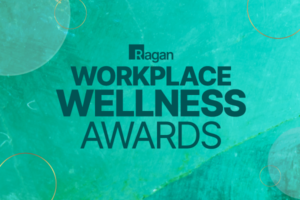What the post-Labor Day return to office means now
While the trickle of employees returning to work has been somewhat steady, things have clearly changed. Will employee perks bring back more workers to the office?

How are in-office and remote work situations changing now that summer is over?
Earlier this year a number of notable companies, including Apple and Tesla, sent out memos to their employees stating that they expected them to come back to their physical workplaces after Labor Day weekend to regain a sense of normal operations and to promote team bonding. That seems reasonable enough on the surface; in terms of government guidance, the distancing restrictions that kept employees at home are a thing of the past across the country.
Yet not all companies are responding in the same way, as several companies are communicating fresh policies around the return to work to their employees.
Catering to Employees
While there’s undoubtedly a benefit to face-to-face interaction in a workplace, making the switch back to full-time in-person work can be a tough adjustment for some people. That’s why some organizations are taking extra steps to provide perks to their employees to make a return to the office a little more enticing. A company might consider offering amenities like gym memberships to keep employees active, or catered lunches to give them a built-in break during the day.
According to a report by CoStar, employers are taking notice:
“The built environment has to be a place folks want to go,” Rob Olivet, a senior vice president for global project management firm MGAC, told CoStar News. “Historically, office space was centered around how much square footage each person needed and economizing costs, but the pandemic has made it so that it isn’t just about the dollars and cents. The COVID and hybrid workforce has prompted more attention to certain amenities, and those high-end amenities are definitely helpful in getting people back to the office.”
The message here is pretty simple. If you want your employees to come back to the space you’re renting, you’re probably going to have to pull out a few stops for them as an employer.
Work From Home as a Perk
Even though the post-Labor Day trend of partial or full returns to office work is undeniable, after two years, it’s going to be tough to entice some employees back to full-time in-person work. There are a multitude of reasons employees do not feel compelled to return full-time to physical spaces. Because of that, employers are taking the pulse of employees and honing in on ways to make employees “happy,” hence the reason for ongoing hybrid models.
Working from home can be an additional perk for an organization. Perhaps a company could consider having permanent work-from-home Mondays and Fridays to allow their workers to travel more or have a few designated days a month when people need to be in-office. Additionally, building in time for work-from-home employees to attend to duties such as childcare during the day could be another added benefit. Flexibility goes a long way, and smart employers know this.
What Lies Ahead?
There’s no way to tell exactly what’s on the horizon in terms of the return to the office, but for the time being, it seems more and more people will return in some capacity in the coming months. However, whether it’s another variant of COVID or a trend in employee pushback against return mandates, employers need to be prepared to take the individual situations of each employee into account when making a return plan. From a communications perspective, this requires a deft, compassionate touch. The last two-plus years have been a time of upheaval and change in many people’s personal and professional lives, and employers owe it to their employees to provide them clear explanations on return-to-office policies, and listening ears for any individual needs that are expressed by employees, whether they’re in-person hybrid, or remote.







